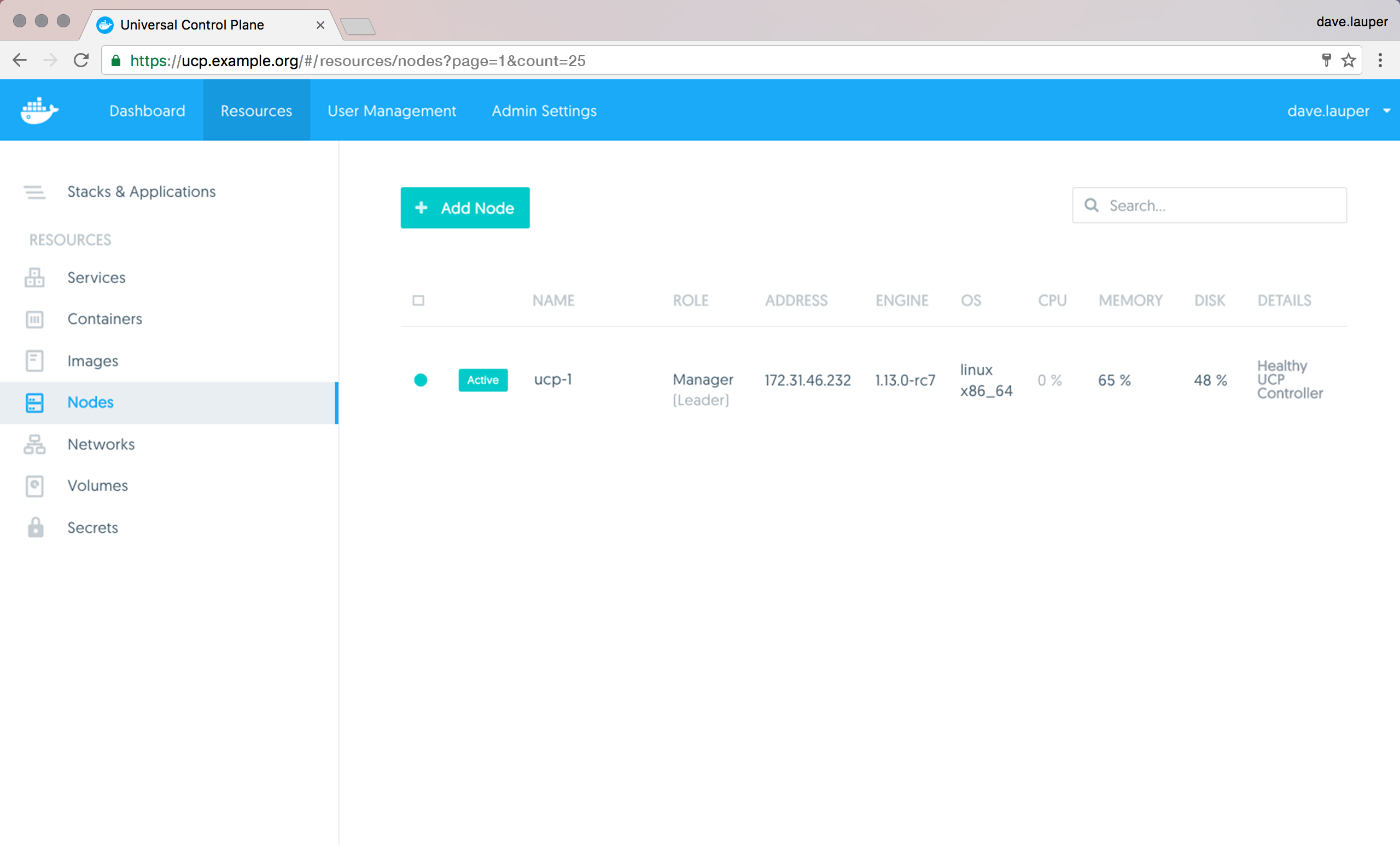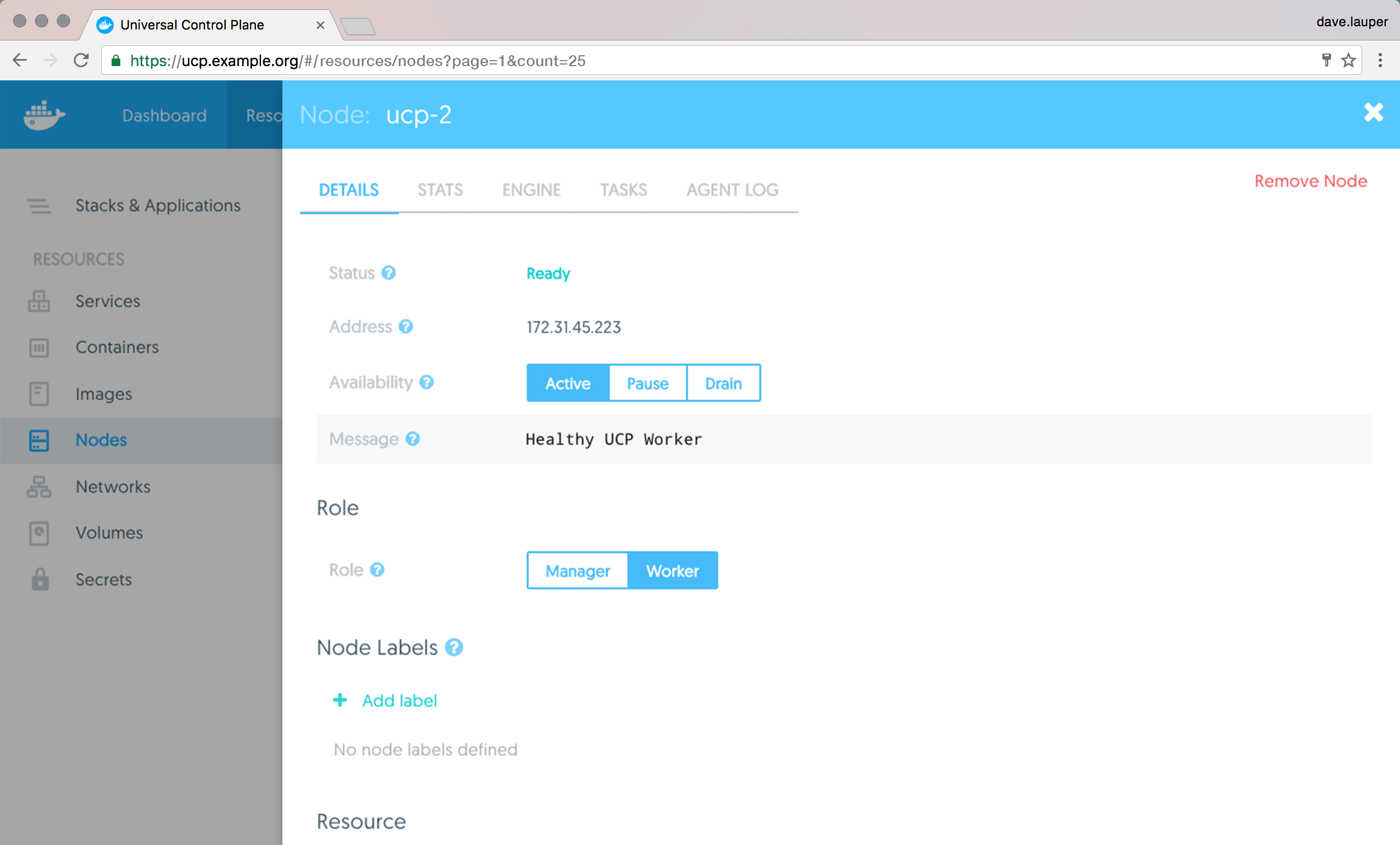Scale your cluster
Estimated reading time: 4 minutesDocker UCP is designed for scaling horizontally as your applications grow in size and usage. You can add or remove nodes from the UCP cluster to make it scale to your needs.
Since UCP leverages the clustering functionality provided by Docker Engine, you use the docker swarm join command to add more nodes to your cluster. When joining new nodes, the UCP services automatically start running in that node.
When joining a node to a cluster you can specify its role: manager or worker.
-
Manager nodes
Manager nodes are responsible for cluster management functionality and dispatching tasks to worker nodes. Having multiple manager nodes allows your cluster to be highly-available and tolerate node failures.
Manager nodes also run all UCP components in a replicated way, so by adding additional manager nodes you’re also making UCP highly available. Learn more about the UCP architecture.
-
Worker nodes
Worker nodes receive and execute your services and applications. Having multiple worker nodes allows you to scale the computing capacity of your cluster.
When deploying Docker Trusted Registry in your cluster, you deploy it to a worker node.
Join nodes to the cluster
To join nodes to the cluster, go to the UCP web UI, navigate to the Resources page, and go to the Nodes section.

Click the Add Node button to add a new node.

Check the ‘Add node as a manager’ option if you want to add the node as manager. Also, set the ‘Use a custom listen address’ option to specify the IP of the host to be joined to the cluster.
Then you can copy the command displayed, use ssh to log into the host that you want to join to the cluster, and run the command on that host.

After you run the join command in the node, the node starts being displayed in UCP.
Remove nodes from the cluster
- If the target node is a manager, you will need to first demote the node into
a worker before proceeding with the removal:
- From the UCP web UI, navigate to the Resources section and then go to the Nodes page. Select the node you wish to remove and switch its role to Worker, wait until the operation is completed and confirm that the node is no longer a manager.
- From the CLI, perform
docker node lsand identify the nodeID or hostname of the target node. Then, rundocker node demote <nodeID or hostname>.
-
If the status of the worker node is
Ready, manually force the node to leave the swarm. To do this, connect to the target node through SSH and rundocker swarm leave --forcedirectly against the local docker engine.Warning: Do not perform this step if the node is still a manager, as that may cause loss of quorum.
- Now that the status of the node is reported as
Down, you may remove the node:- From the UCP web UI, browse to the Nodes page, select the node and click on the Remove Node button. You will need to click on the button again within 5 seconds to confirm the operation.
- From the CLI, perform
docker node rm <nodeID or hostname>
Pause and drain nodes
Once a node is part of the cluster you can change its role making a manager node into a worker and vice versa. You can also configure the node availability so that it is:
- Active: the node can receive and execute tasks.
- Paused: the node continues running existing tasks, but doesn’t receive new ones.
- Drained: the node can’t receive new tasks. Existing tasks are stopped and replica tasks are launched in active nodes.

If you’re load-balancing user requests to UCP across multiple manager nodes, when demoting those nodes into workers, don’t forget to remove them from your load-balancing pool.
Scale your cluster from the CLI
You can also use the command line to do all of the above operations. To get the join token, run the following command on a manager node:
$ docker swarm join-token worker
If you want to add a new manager node instead of a worker node, use
docker swarm join-token manager instead. If you want to use a custom listen
address, add the --listen-addr arg:
docker swarm join \
--token SWMTKN-1-2o5ra9t7022neymg4u15f3jjfh0qh3yof817nunoioxa9i7lsp-dkmt01ebwp2m0wce1u31h6lmj \
--listen-addr 234.234.234.234 \
192.168.99.100:2377
Once your node is added, you can see it by running docker node ls on a manager:
$ docker node ls
To change the node’s availability, use:
$ docker node update --availability drain node2
You can set the availability to active, pause, or drain.
To remove the node, use:
$ docker node rm <node-hostname>
